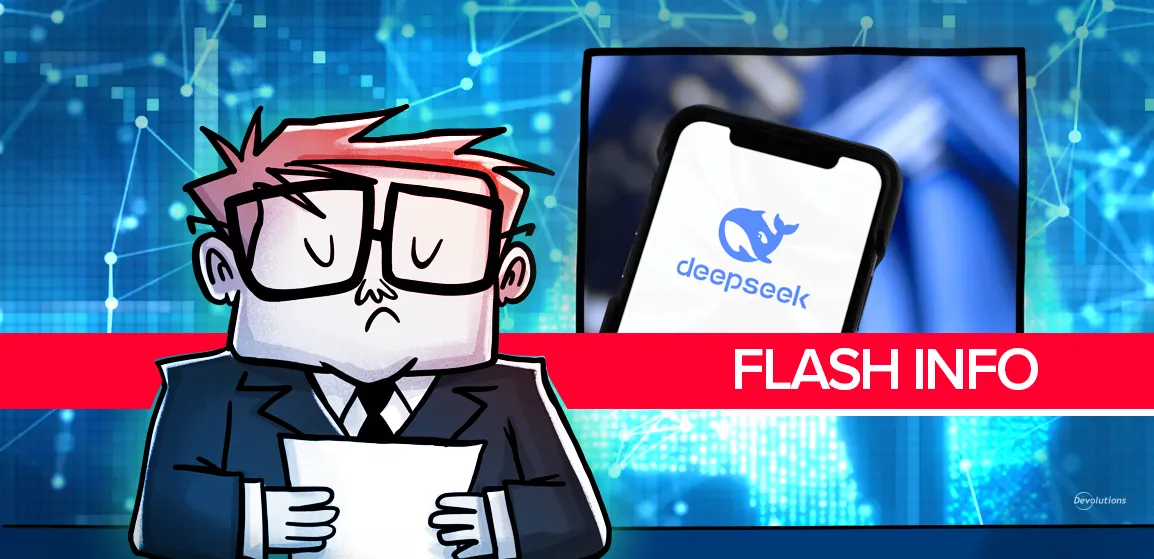Each year, Gartner publishes a list of what it deems the top strategic trends that drive crucial business outcomes, and create an imperative to act for digital, IT, and technology leaders. The 2023 edition has just been published, with Gartner slotting 10 trends in 3 categories:
- Trends that focus on optimizing IT systems for greater reliability, improving data-driven decision-making, and maintaining value integrity of AI systems in production.
- Trends that drive scaling by accelerating vertical offerings, increasing the pace of product delivery, and enabling connectivity everywhere.
- Trends that are pioneering efforts to enable business model changes, reinvent engagement with employees and customers, and accelerate strategies to tap new virtual markets.
Below we look at each trend. Note that these trends are grouped by theme (optimizing/scaling/pioneering), and listed in the order in which they are presented by Gartner (and not necessarily in order of urgency or priority).
Trends that Focus on Optimizing
Digital Immune System
A digital immune system (DIS) blends practices and technologies from a variety of sources — including observability, AI-augmented testing, chaos engineering, auto-remediation, site reliability engineering and software supply chain security — in order to enhance the resilience of products, services, and systems. This approach and investment also strengthens the crucial link between software development and business outcomes.
By 2025, Gartner predicts organizations that invest in building a DIS will decrease downtime by as much as 80%, which will in turn dramatically improve customer satisfaction and user experience.
To leverage DIS, Gartner advises the following core actions:
- Form executive-sponsored teams to create and execute a DIS strategy. Begin by evaluating what business capabilities have the highest priority, or will benefit the most from DIS.
- Establish dedicated communities of practice (CoPs), and mandate them to share lessons learned, best practices, reusable assets, standards, tools, and AI-based insights. It is critical to ensure that CoPs are led by enterprise architects, so that all relevant domains are represented.
- Foster and drive resilience improvements across the organization, especially those involving collaboration on DIS initiatives and opportunities. Ensure that all leaders of resilience-related initiatives are equally responsible for improving customer experiences.
- Enable a collaborative culture between development, security, and operations teams. This cross-functional teamwork and cohesion help DIS initiatives take root rather than fizzle out.
Applied Observability
Applied observability concerns applying observable data in a highly orchestrated and integrated manner across business functions, applications, and infrastructure and operations (I&O). The goal is to establish the shortest latency from action to reaction while driving proactive vs. reactive planning and decision-making. In some cases, business operations can even be optimized in real-time — which is remarkable to think about!
By 2026, Gartner predicts that 70% of organizations that successfully exploit applied observability will achieve shorter latency for decision-making, thereby enabling competitive advantage for target business and IT processes.
To leverage applied observability, Gartner advises the following core actions:
- View observable data as your most precious and monetizable asset. Drive competitive advantage by identifying business capabilities and use cases from both active and passive metadata. This helps establish a foundation for strategically orchestrating multiple concurrent observability initiatives.
- Reframe the paradigm from monitoring and reacting, to applying observability. Remember, the goal is to enable proactive, intelligent decision-making with the shortest possible latency.
- Realize that it can take time for the broader organization to adopt, accept, and exploit applied observability. Pave the way by focusing on the spectrum of business, application, and infrastructure layers.
AI Trust, Risk and Security Management
Despite the tremendous — and in some cases transformative — potential benefits of AI, a chief concern is that conventional controls cannot support the advanced forms of risk and security management that AI requires. That is where AI Trust, Risk, and Security Management (AI TRiSM) enters the picture.
AI TRiSM refers to solutions, techniques, and processes for: model interpretability and explainability, AI privacy, model operations, and adversarial attack resistance. The goal is to fill the gap left by conventional controls by establishing a new, higher level of AI model governance, trustworthiness, fairness, reliability, robustness, efficacy, and privacy.
Gartner expects that by 2026 organizations that successfully implement AI TRiSM will see their AI models achieve a 50% improvement across adoption, business goals, and user acceptance.
To leverage AI TRiSM, Gartner advises the following core actions:
- Establish an organizational task force or dedicated unit to manage all AI TRiSM efforts.
- Create collective AI privacy, security and risk management for improved AI business outcomes, and not just to meet compliance requirements.
- Work across the organization to effectively manage best-of-breed toolsets as part of a comprehensive AI TRiSM program.
- Make AI models explainable or interpretable by using open-source tools or vendor solutions that add value.
- Implement solutions that protect data used by AI models, and prepare to use various data protection methods for multiple use cases.
- Incorporate risk management into model operations by using solutions that ensure model and data integrity, and that constantly confirm that they are operating reliably.
Trends that Drive Scaling
Industry Cloud Platforms
Organizations generate value from industry clouds by incorporating cloud services as pre-integrated and customizable (composable) solutions, which are supported by a catalog of industry-specific packages and business capabilities. This is a major change from the conventional approach of purchasing cloud services separately as pre-defined, one-off vertical SaaS solutions. This goal is to enable organizational agility, increase the speed of innovation, and accelerate time-to-value.
Unlike some of the other trends we are highlighting, widespread adoption of industry cloud platforms is still a few years away (read this good article at siliconangle.com for some of the reasons why). Gartner predicts that by 2027, 50% of large enterprises will use industry cloud platforms to accelerate business initiatives and grow revenues.
To leverage industry cloud platforms, Gartner advises the following core actions:
- Target industry cloud platforms to complement the existing portfolio. Focus on new capabilities that add substantial value on a functional — and not just technical — level.
- Foster organization-wide understanding and acceptance by engaging business technologists and fusion teams. If these teams do not already exist, then set them up, and give them the mandate and resources they need.
- Create rules that govern when to deploy industry cloud platform capabilities to optimize and modernize existing processes, and when to actively recompose processes when the goal is about differentiating transformation and innovation initiatives.
Platform Engineering
Platform engineering aims to optimize developer experience and accelerate digital delivery by deploying platforms that sit between end users and backing services. The goal is a frictionless self-serve experience that enables end users to perform meaningful, valuable work with as little overhead and cognitive burden as possible.
Gartner predicts that by 2026, 80% of software engineering organizations will establish platform teams as internal providers of reusable services, components, and tools for application delivery. What’s more, platform engineering will also help these organizations attract and retain talent — which is increasingly difficult. According to IDC, the global shortage of full-time developers will reach a staggering 4 million in 2025, up from 1.4 million in 2021.
To leverage industry platform engineering, Gartner advises the following core actions:
- Aim for early platform-building efforts at internal developer portals (IDPs). Experiences, guiding principles, and lessons learned will be extensible to other platforms in the future.
- Embed security into the production workflow as early as possible (i.e., security teams need to shift left). Platform engineers also need to incorporate robust automated security and compliance checks as part of their test suites.
- Beware of buying a “turnkey platform.” Gartner warns that while some vendors may promise otherwise, a single commercially available solution is unlikely to provide all facets needed in a platform. Prepare to spend a significant amount of time and effort customizing the platform.
Wireless-Value Realization
Wireless-value realization refers to the integration of various wireless technologies (e.g., traditional end user computing, support for edge devices, digital tagging solutions, etc.), in order to generate a more cost-efficient, reliable, and scalable technical foundation that reduces capital expenditure. The approach is about evolving wireless networks into a broader digital innovation platform and a source of direct business value.
Gartner forecasts that by 2025, 50% of enterprise wireless endpoints will use networking services that deliver additional capabilities that go beyond communication. This would be a significant expansion, as currently less than 15% of enterprise wireless endpoints provide these enhanced capabilities.
To leverage wireless-value realization, Gartner advises the following core actions:
- Create an infrastructure strategy with help from vendors that understand solutions suited for accommodating, securing, and managing 5+ diverse wireless systems of the future.
- Educate business peers on the potential use cases for wireless technology (e.g., location, sensing, etc.). Collaborate to identify innovation opportunities that drive new digital products and services.
- Establish the standardization of interoperable connectivity and security elements, in order to create a solid, secure, and resilient core foundation for wireless devices and applications.
Trends that are Pioneering
Superapps
Look! Up there! It’s a bird… it’s a plane… no, it’s superapps!
While not equipped with a cape, superapps are certainly impressive. These are enhanced apps that provide internal and external end users with core features, as well as access to independently-created miniapps. As such, end users can explore and choose a personalized suite of apps, but within a single app.
Gartner lauds superapps as “representing the ultimate manifestation of a composable application and architecture.” They predict that by 2025, more than half of the global population will use multiple superapps on a daily basis.
To leverage superapps, Gartner advises the following core actions:
- Boost the effectiveness of a superapp delivery model by designing for people-centric products, processes and services.
- Identify core, high-engagement features in superapps to drive a critical mass of end users. Rapid, easy, and widespread adoption is crucial.
- Use a mutually beneficial business model to attract and support development partners.
- Make it as easy and convenient as possible for development partners to build, test, register, and submit miniapps for potential monetization.
- Establish a governance ecosystem that is reinforced with shared platform capabilities to define and enforce data security and data protection requirements.
Adaptive AI
In February 2022, the Devolutions’ poll question asked: “What Technologies Do You Expect Will Significantly Change Your Day-to-Day Work Experience in 5 Years?” Not surprisingly, many community members pointed to AI, and looked forward to a time when AI advancements would allow for greater task automation and interaction with technology in more natural ways. Adaptive AI promises to be a big piece of this puzzle.
In essence, adaptive AI systems allow for model behavior change post-deployment, by learning behavioral patterns from previous human and machine experience — and within runtime environments — to adapt more quickly to changing real-world dynamics. The goal is to accelerate value and continuously keep AI aligned to enterprise goals in real time.
By 2026, Gartner predicts organizations that adopt AI engineering practices to build and manage adaptive AI systems will outperform their peers in operationalizing AI models by at least 25%.
To leverage adaptive AI, Gartner advises the following core actions:
- Build the foundations of adaptive AI systems by complementing current AI implementations with continuous intelligence design patterns and event stream capabilities. Eventually, move toward agent-based methods that give greater autonomy to systems components.
- Incorporate clear and measurable business indicators through operationalized systems, and incorporate trust within the decisioning framework. This makes it easier for business users to adopt AI, and contribute toward managing adaptive AI systems.
- Optimize business value from ongoing AI initiatives by establishing AI engineering practices that streamline data, models, and implementation pipelines to standardize AI delivery processes. The importance of this cannot be overstated. Considering the engineering complexity and the demand for faster time-to-market, it is critical to develop more flexible AI engineering pipelines, and build AI models that can self-adapt in production.
Metaverse
In the early 1990s, science fiction author William Gibson envisioned, in his novel Neuromancer, a virtual arena (which he coined cyberspace) as a “consensual hallucination experienced daily by billions of legitimate operators.”
Well, fast forward about three decades, and we can hear some faint (but audible!) echoes of Gibson’s futuristic vision with the emergence of the metaverse: a combinatorial innovation composed of multiple technologies that seek to drive engagement, collaboration, and connection to their employees through virtual workspaces and the use of internal experiences (known as “intraverses”).
Gartner predicts that by 2027, 40% of large organizations will use a combination of Web3, spatial computing, and digital twins in metaverse-based projects aimed at increasing revenue.
To leverage metaverse, Gartner advises the following core actions:
- Explore opportunities where metaverse technologies might optimize digital business, or drive new products and services.
- Develop metaverse products and solutions through a pipeline of innovation.
- Identify metaverse-inspired opportunities through evaluating high-value use cases.
- Build technology strategies that leverage the built-in infrastructure and participants.
- Carefully allocate resources in specific emergent metaverses. It is still too early to determine which investments will be viable in the long term, and implications of emerging metaverse technologies will vary across industries.
- Proactively establish a data governance, security, and privacy policy to protect customer and employee data.
Other Trends
Sustainable Technology
The last item on Gartner’s list of the top 10 strategic technology trends in 2023 was not categorized as optimizing, scaling, or pioneering. However, this by no means makes it secondary. In fact, in the bigger picture and long run, it may arguably be the most urgent priority of all: sustainable technology.
Sustainable technology is a framework of solutions aimed at increasing the energy and material efficiency of IT services. For example, customers can be guided and directed through apps, software, and marketplaces to be more sustainable. Investments in sustainable technology have the potential to create greater operational resiliency and financial performance, while creating new avenues of growth
By 2025, Gartner estimates that half of CIOs will have performance metrics tied to the sustainability of their IT organization.
To leverage sustainable technology, Gartner advises the following core actions:
- Enhance the energy and material efficiency of IT infrastructure and workplace services.
- Prioritize technology investments based on the sustainability issues that are most material to the enterprise strategy (e.g., using cloud services to raise utilization rates of shared resources and reduce environmental impact).
What’s Your View?
Sociologist and writer Daniel Bell said: “Technology, like art, is a soaring exercise of the human imagination.” According to Gartner, the 10 strategic technology trends above will combine to paint the business canvas in 2023 — and beyond.
Now, we want to hear from you. What’s your view? Do you see some of these trends as more crucial than others? Do you have experience implementing any of these trends? Do you think Gartner overlooked any trends that should be in the top 10? Share your knowledge and advice by commenting below.





